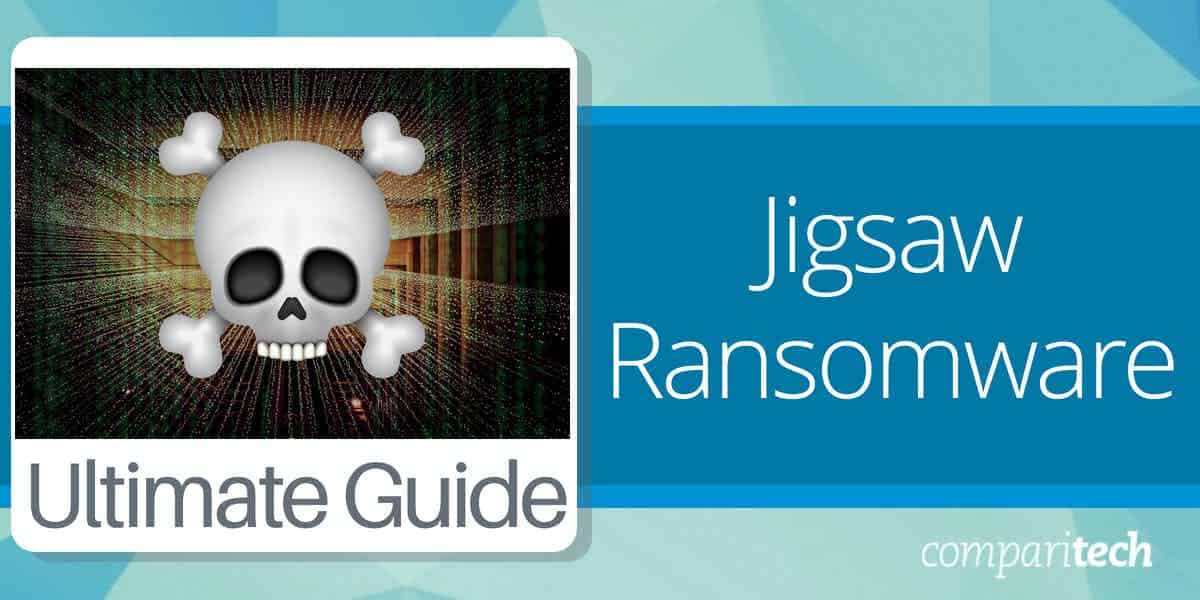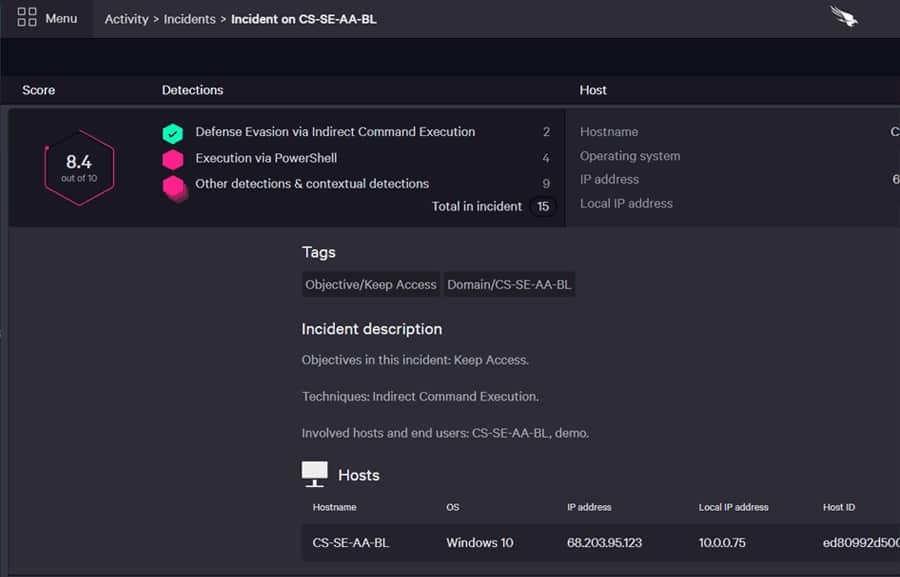In March 2016, Jigsaw featured the Billy the Puppet character from the horror movie Saw on its ransom demand page
Although it struck fear into businesses worldwide, this terror turned out to be fallible because it was written in .NET, and its code could be read to work out how to decrypt files instead of paying the ransom.
Despite its security weakness, Jigsaw needs to be protected. Although not currently on the rampage, Jigsaw has a habit of rising from the dead, so it could yet return and scare the life out of your network manager.
About Jigsaw ransomware
Jigsaw ransomware was also known as BitcoinBlackmailer. It only attacks computers running the Windows operating system. When malware is first spotted, each cybersecurity research lab comes up with a name. While some, on learning about other labs naming a virus will go along with that name, others, identifying the new malware almost simultaneously, will come up with their word for it. Thus, some malware is known by multiple characters, and this is the case with Jigsaw/BicoinBlackmailer.
Jigsaw was the main protagonist of the Saw horror franchise. This was the character Jim Kramer, a serial murderer, dubbed the Jigsaw Killer. In the run-up to a murder, Jigsaw trapped his victims and then taunted them with tasks that promised to save their lives. The instructions for these tasks were delivered over TV monitors by a puppet called Billy. A picture of this puppet appears on the ransom demand of the malware, which inspired its name.
The name Jigsaw didn’t appear on the screen of the earlier versions. However, as the months passed, new variants were released, and the writers adopted the Jigsaw name.
What does Jigsaw ransomware do?
Jigsaw gets onto a system through spam email. Variants of the ransomware can also be found in Adware and on porn site downloads. The attachment or download includes the installer for Jigsaw and will activate once the file is opened.
Jigsaw hides its existence by adopting the name firefox.exe or drpbx.exe. The code for the encrypting virus is located in %UserProfile%\AppData\Roaming\Frfx\firefox.exe, and it writes a launching command for itself in the Startup process list.
The ransomware encrypts all data files on the infected computer, plus its Master Boot Record. It uses AES encryption. It also ensures it starts up with the computer. Encryption starts immediately once the program has been installed. Fortunately, Jigsaw doesn’t move laterally around a network. It only encrypts files on the device onto which it has downloaded. The system does not encrypt executables.
The ransom screen appears once the encryption process has been completed. This includes a countdown for an hour; when that reaches zero, a file gets deleted. The screen consists of a button, which, when pressed, brings up a text file that lists all of the encrypted files.
The ransom for the decryption key is the Bitcoin equivalent of $150. To motivate the victim, Jigsaw deletes a file after one hour. It then performs a delete cycle every hour, deleting an increasing number of files with each action. If the payment isn’t made 72 hours after the initial message shows, the ransomware will wipe the whole computer.
Rebooting the computer is a bad idea because the ransomware will start up again and delete 1,000 files as a punishment. The ransom warning also states that 1,000 files will be deleted if the user attempts to terminate the malware’s running process. However, this turned out to be untrue, making it very easy to defeat the program.
Many cybersecurity analysts concluded that Jigsaw was the product of amateurs, perhaps overachieving teenagers, because it wasn’t very well planned. The ease with which researchers could spot the process and stop it showed that the hackers didn’t have much experience creating malware. This leads to the conclusion that the Jigsaw system was more of a dare than a threat.
Paying the ransom for Jigsaw ransomware
The ransom screen shows the identifier of a Bitcoin wallet. The victim is supposed to buy the demanded Bitcoin and allocate them to that wallet.
The screen also includes a button that the victim has to press once the payment has been made. The system then checks the account for price and, if that is detected, it will update the program to decrypt all of the files and then delete all of the ransomware components, putting the computer back into its original state.
Variants of Jigsaw
There were many variants of Jigsaw, each indicated by a different ransom screen, a different extension used for encrypted files, and different methods of ingress. The amount of the ransom changed with each version as well. The first incarnation asked for $150, but the demands of subsequent variants ranged from $10 to $380. The original Jigsaw added the .fun extension and the developers initially used this name for the ransomware.
Newer versions of the Jigsaw malware were either adaptions to change the language of the demand screen, refinements of the code, changes to the ransomware screen layout, or differently named ransomware that was almost identical to the original Jigsaw.
Some variants used a contact email address as the encrypted file extension with several different addresses employed. This could imply that many of the variants were adapted by other individuals who had acquired the Jigsaw code.
Recovering from Jigsaw ransomware
Cybersecurity analysts discovered very quickly that the Jigsaw ransomware and all of its variants could be easily defeated. Although the ransom screen states that 1,000 files will be deleted if the user tries to stop the process, that isn’t the case.
Follow these steps to recover from Jigsaw for free:
- Open the Task Manager and kill two processes. These are Firefox and Dropbox. The variant you have might use either or both of these. If you don’t spot both, don’t worry. Just make sure that neither is running.
- Open the Startup tab in the Task Manager and disable the Firefox and/or Dropbox entries there.
- Download the CheckPoint Jigsaw Puzzle Solver by clicking here. Unpack the JPS.zip file.
- Go to the directory you unzipped into and right-click on the JPS.exe file—select Run as Administrator.
- Follow the instructions in the Jigsaw Puzzle Solver.
The Check Point utility tricks the Jigsaw program into thinking that the ransom has been paid, so it launches all of its remediation processes and decrypts all files. It will also clean up by removing all elements of the Jigsaw ransomware from the computer.
Two characteristics of Jigsaw make it easy to deal with. First of all, it only infects one computer simultaneously; it doesn’t replicate itself around the network. Secondly, it fires immediately after it has been installed on a computer, so you don’t have to worry that there might be copies lying dormant on any of your computers.
Protecting against Jigsaw ransomware
Jigsaw hasn’t emerged again for quite a while. However, the creators were never arrested, so they are still out there and could relaunch a campaign at any time. Although there is an easy solution available to reverse the encryption, these hackers rely on the fact that some people who are attacked will panic and pay the ransom as quickly as possible without looking for a free solution.
The hackers behind Jigsaw were never identified. It wasn’t even discovered which country they operate in. There is plenty of research published on the Web that explains the weaknesses of Jigsaw, and the hackers are more than likely to have read all of that analysis. They could be out there right now, hardening their ransomware to make it harder to defeat.
Jigsaw ransomware gets downloaded by the computer user. Therefore, essential protection against future attacks by this and any other ransomware is to educate the user community about downloading attachments on emails from unknown sources. It is also a good idea to place penalties for users to prevent them from downloading unauthorized software onto company computers.
You should also have intelligent cybersecurity software installed on all endpoints and invest in security monitoring software.
The best tools for defense against Jigsaw ransomware
As desktop computers are the most vulnerable to Jigsaw ransomware, you need to get an endpoint detection and response suite (EDR) package to protect all of your endpoints. If you are tied to a data privacy standard, such as HIPAA, PCI DSS, or GDPR, you should have security software to defend sensitive data from any attack.
EDR systems have evolved from the original antivirus systems. Whereas AVs checked for files or processes running on a computer in a known malware list, EDRs are more sophisticated. IT takes time for cybersecurity research labs to become aware of new malware, investigate it, and produce a solution. During that period, many computers could be infected by what are called “zero-day attacks.” Modern EDR systems don’t rely on a blacklist. Instead, they look for unusual behavior.
A sound EDR system shares information about attacks between clients. This cuts out the research labs by pooling experiences, so as soon as the implementation of an EDR spots a new virus on one client site, all of the other instances of that EDR operating in the world know about it.
Here are two examples of the type of protection software that you will need to protect against Jigsaw and any other ransomware.
1. CrowdStrike Falcon Insight (FREE TRIAL)
CrowdStrike Falcon Insight is a coordinated enterprise-wide EDR. It includes modules installed on all endpoints plus a cloud-based central controller. The endpoint agents are implementations of a standalone next-generation antivirus system marketed by CrowdStrike. This is called Falcon Prevent.
The endpoint agents are fully autonomous and will continue to operate if the computer is cut off from the network and can’t get through to the Insight controller. Ordinarily, this module monitors the endpoint and uploads event data to the Insight cloud system for analysis. The cloud system also receives automated threat intelligence from the Insight user community.
The endpoint agent looks for abnormal activity and can implement immediate actions if it spots it. Instructions for responses also come down from the Insight system. The service can kill processes, delete files, isolate the device from the network, suspend user accounts, and block communication with suspicious IP addresses. All of these actions are suitable for dealing with Jigsaw.
The abilities of Falcon Insight provide protection against zero-day attacks as well as a list of known malware. The coordinating functions of the Insight cloud module mean that as soon as one endpoint is attacked, all other endpoint agents are put on alert.
You can get a 15-day free trial of Falcon Prevent.
2. ManageEngine DataSecurity Plus
ManageEngine DataSecurity Plus is a system for protecting sensitive data. This package was designed to assist companies that have to comply with a data privacy standard, such as HIPAA, PCI DSS, and GDPR. Data protection systems have to ensure that data is not damaged or inaccurate and maintain its availability for appropriate use. Some malware attacks aim at stealing and then selling or publishing personally identifiable information (PII).
DataSecurity Plus locates and categorizes sensitive data and then protects it. The system implements file integrity monitoring, which alerts on unauthorized changes to files or unauthorized movement. The service monitors emails and USB devices to block downloads and prevent data disclosure.
The security service protects Windows systems, which are the targets for Jigsaw and most other ransomware. The package presents options to administrators to set up automated responses to detected attacks.
The software for ManageEngine DataSecurity Plus installs on Windows Server, and it is available for a 30-day free trial.
L’article What is Jigsaw Ransomware & How to Protect Against It? est apparu en premier sur Comparitech.



0 Commentaires